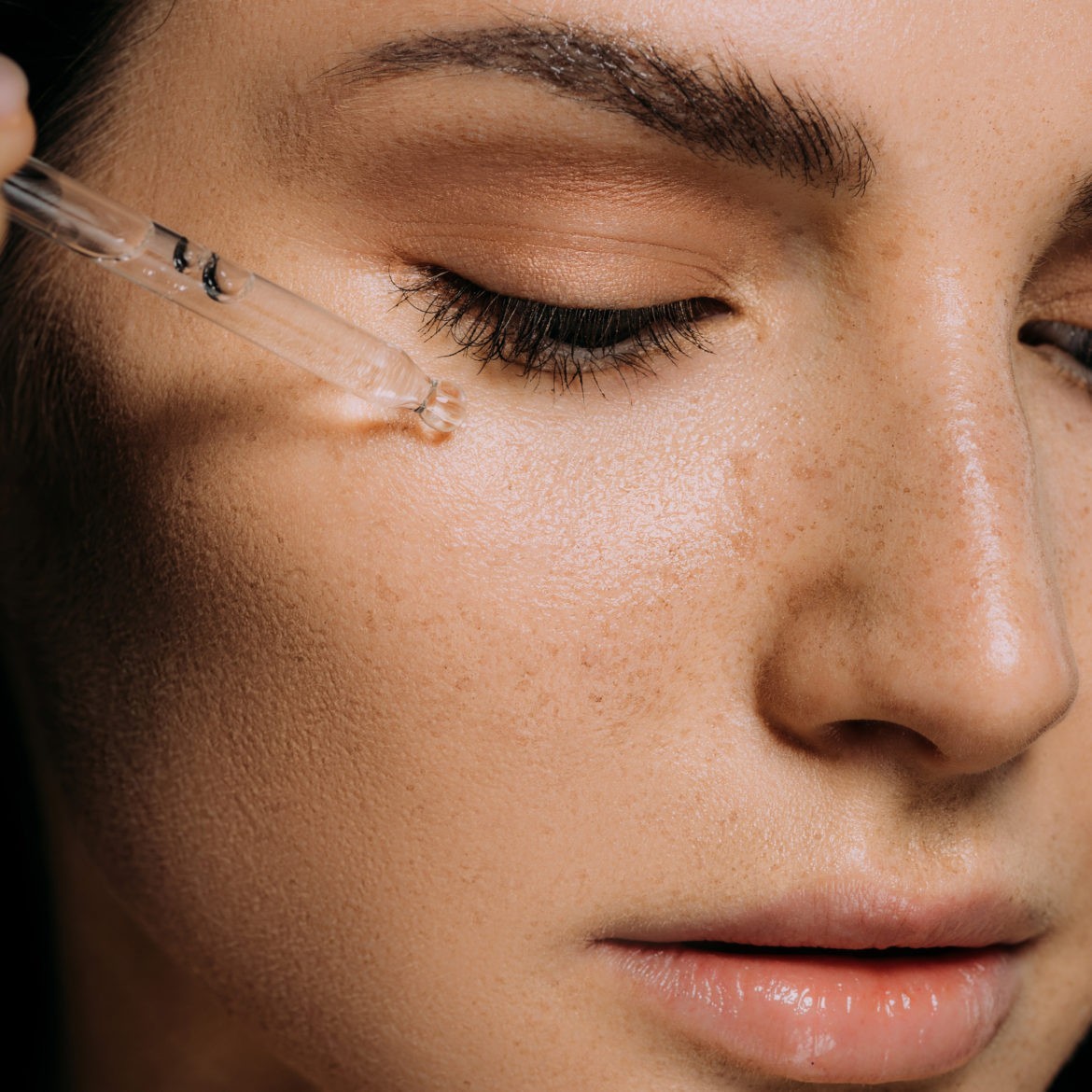Active ingredients (also: active ingredients, actives) are cosmetic ingredients that can actively improve one or more skin problems, with scientifically proven effects. "Actives" can already be included in the moisturiser or applied in a further skin care step (e.g. as a serum) after cleansing and before the moisturiser.
Why an active ingredient serum in addition to moisturiser?
The advantage of a separate product is that it can be dosed individually depending on the skin's tolerance and need.
As a disadvantage (besides the time required for an additional care step), many people know the so-called "pilling": if you apply several products one after the other, small product globules may form on the skin. To prevent this unattractive effect, you should give the individual products enough time between the steps to be completely absorbed into the skin. To be on the safe side, water-based products should only be combined with other water-based products, and silicone-based products with silicone-based products. It's also important to note that most active ingredients require at least two skin cycles (about 6-8 weeks) to show a noticeable improvement. So be patient and give the products enough time to work.
But beware: much does not necessarily help much...
In contrast, the motto "a lot helps a lot" does not apply to active ingredients. If too many active ingredients are wildly combined, this is rather a guarantee for sensitised and stressed skin. Therefore: "Keep it simple". It is best to use only one active ingredient in the morning and one in the evening.
In the following, I would like to introduce you to three of the most important and proven active ingredients.
3 important actives: vitamins A-B-C
Vitamin A (Retinol)
Retinoids are a group of vitamin A derivatives that have been used successfully in dermatology for decades. In over-the-counter skin care, this is the active ingredient retinol (vitamin A1). Retinol is naturally important for the growth processes of cells. It ensures that the epidermis regenerates more quickly. This reduces wrinkles as well as pigment spots. Through a natural peeling effect, the horny layer becomes thinner and the tendency to acne decreases. The overall appearance of the skin becomes finer and more even. In the middle layer of the skin, retinoids stimulate collagen and hyaluron synthesis when used regularly. As a rule, retinol-containing products require an acclimatisation phase during which redness and flaking may occur until the skin has built up an appropriate tolerance. To minimise irritation, it is helpful to wait at least 15 minutes after cleansing the face before applying the retinol product to the skin. For "retinol beginners", for example, a serum with 0.5% retinol is well suited. In addition, some serums contain nourishing active ingredients such as squalane.
Retinoids, which are available only on prescription, have a much higher dosage and are also more effective. They must be prescribed by a doctor according to the individual skin condition.
Caution: Retinol or retinoids should never be used during pregnancy. So if you are planning to get pregnant, it is best to switch to possible alternatives now!
Vitamin B (niacinamide)
Niacinamide (vitamin B3) is also a real multitasker among the "actives". The active ingredient strengthens the skin's barrier function by promoting the production of intercellular lipids (the "mortar" between the skin cells, so to speak). As a result, the skin loses less moisture. In addition, niacinamide has an antioxidant effect. At the same time, the active ingredient is also super suitable for skin that is prone to acne, due to its sebum-regulating and anti-inflammatory effect. In addition, niacinamide inhibits the transport of melanin from the pigment-forming cells and can thus prevent pigment spots. The active ingredient is often contained in skin care serums. I recommend using a fragrance- and alcohol-free serum with a maximum of 10% niacinamide. These are often available quite cheaply in drugstores or perfumeries. If you have oily skin or acne, you can choose a serum that also contains the active ingredient zinc.
In lower concentrations, niacinamide is often already contained in moisturisers (e.g. in pharmacy cosmetics).

Vitamin C (L-(+)-ascorbic acid)
UV radiation, tobacco smoke and air pollution lead to the formation of free oxygen radicals in our skin, which in turn can cause DNA damage, chronic inflammatory reactions, and subsequently wrinkles and pigmentation spots. Vitamin C is an antioxidant and can counteract these things as an active ingredient in skin care. Other effects of vitamin C include inhibiting melanin synthesis (thus the formation of melasma and sun spots) and stimulating collagen formation. It makes sense to apply an antioxidant-containing serum or cream during the day under the SPF 30+ sunscreen, so to speak, as a second defence against UV and other light-induced skin damage. Since L-(+)-ascorbic acid is very unstable in cosmetic formulations, ascorbic acid derivatives are often used there. Ascorbyl glucoside is a water-soluble derivative that is stable but still allows for light and well-tolerated serum formulations. Higher priced serums sometimes contain additional antioxidants such as vitamin E and ferulic acid. This combination, if tolerated, can increase efficacy. I also recommend using alcohol- and fragrance-free products as much as possible.
With vitamin C, tolerance can be a problem. Therefore, I recommend combining it with as few other active ingredients as possible and applying the products at different times of the day (e.g. vitamin C in the morning, retinol in the evening). Barrier-damaged skin in particular can react to vitamin C with irritation. In this case, it may be advisable to "creep in" the new product, i.e. to use it 2 - 3 times a week at first. Or first repair the skin barrier with the appropriate basic care. Medical peels in the right combination can have a supporting effect here. In general, regular medical pe els can "boost" the effect of the active ingredients and thus ensure even more radiant skin.
Finally, the advice: "Less is more." 😉 It is better to start with a single product and observe the effect on the skin. A well-tolerated basic care (cleansing + moisturising + sun protection factor) that strengthens the skin's own protection and an occasional medical skin treatment under medical supervision are often better for treating problems in a targeted way than a lot of your own "experimenting around".
Make an appointment for a consultation via the online booking.






